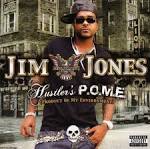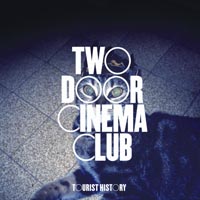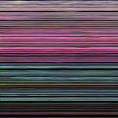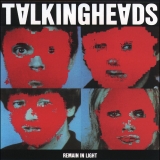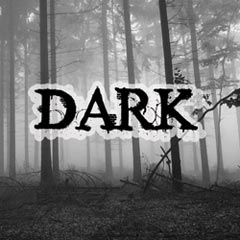2022-11-01
The Musical Biography of Switchblade Symphony
Switchblade Symphony, one of the most influential and unique music groups in the 90s gothic and darkwave music underground scene. This San Francisco-based band finds its roots back in the early 1990s and was known for its distinctive melodic and cinematically dark sound. Through their three released albums, they managed to create a devoted fan base all over the world through their electrifying performances and evocative music. In this blog post, we will take a deep dive into Switchblade Symphony's musical biography, starting from their beginnings, their most famous albums, their most famous songs, their musical style, and influences.
Switchblade Symphony was formed in 1989 by Tina Root and Susan Wallace. Root had a background of being a punk band vocalist, while Wallace was initially working as a photographer. Together they started to make music under different band names before settling on Switchblade Symphony. After releasing several demos, they signed their first record deal with Cleopatra Records, and that is when they started garnering attention from the gothic music scene.
Switchblade Symphony released their first album, Serpentine Gallery, in 1995, which gained their popularity in the gothic culture. They then went on a two-year tour, which proved to be a turning point in their career when they signed with Cleopatra Records in 1996. Their second album, Bread and Jam for Frances, produced by industrial music icon John Fryer, was released in 1997 and was a commercial breakthrough for the band. It was released as both an album and an EP, containing acoustic versions and remixes of previous work.
In 1999, the band released its third album, The Three Calamities, which marked the height of their musical evolution. The album showcased a more mature and poetic vision of the band's darkwave and gothic sound, and they began to incorporate various musical styles such as industrial rock and ethereal wave.
One of Switchblade Symphony's best-known songs is Clown, which is a staple of the band's music. Other popular tracks among fans include Witches, Dollhouse, and Gutter Glitter, all of which perfectly represent the band's dark, moody sound and lyrical content.
Switchblade Symphony's music style was often characterized as dark, romantic, and melancholic. Their music features darkwave and gothic elements, including industrial beats, haunting melodies, and eerie soundscapes. They often sang in a somber, angelic tone and featured complex lyrics that evoke surreal tales of beauty and destruction. The band was strongly influenced by the likes of Siouxsie and the Banshees, Dead Can Dance, The Cure, and Cocteau Twins.
In conclusion, Switchblade Symphony's musical biography is a perfect representation of the 90s gothic and darkwave music scene. Their music evokes emotions of sadness and beauty, capturing the essence of the gothic subculture. Through their distinct style and unique sound, they managed to create a loyal fan base that still admires their work to this day. For those who are interested in the gothic music scene, Switchblade Symphony is undoubtedly a band worth learning more about, and their music is still being listened to and admired to this day.
In conclusion, Switchblade Symphony's musical biography is a perfect representation of the 90s gothic and darkwave music scene. Their music evokes emotions of sadness and beauty, capturing the essence of the gothic subculture. Through their distinct style and unique sound, they managed to create a loyal fan base that still admires their work to this day. For those who are interested in the gothic music scene, Switchblade Symphony is undoubtedly a band worth learning more about, and their music is still being listened to and admired to this day.
Switchblade Symphony was formed in 1989 by Tina Root and Susan Wallace. Root had a background of being a punk band vocalist, while Wallace was initially working as a photographer. Together they started to make music under different band names before settling on Switchblade Symphony. After releasing several demos, they signed their first record deal with Cleopatra Records, and that is when they started garnering attention from the gothic music scene.
Switchblade Symphony released their first album, Serpentine Gallery, in 1995, which gained their popularity in the gothic culture. They then went on a two-year tour, which proved to be a turning point in their career when they signed with Cleopatra Records in 1996. Their second album, Bread and Jam for Frances, produced by industrial music icon John Fryer, was released in 1997 and was a commercial breakthrough for the band. It was released as both an album and an EP, containing acoustic versions and remixes of previous work.
In 1999, the band released its third album, The Three Calamities, which marked the height of their musical evolution. The album showcased a more mature and poetic vision of the band's darkwave and gothic sound, and they began to incorporate various musical styles such as industrial rock and ethereal wave.
One of Switchblade Symphony's best-known songs is Clown, which is a staple of the band's music. Other popular tracks among fans include Witches, Dollhouse, and Gutter Glitter, all of which perfectly represent the band's dark, moody sound and lyrical content.
Switchblade Symphony's music style was often characterized as dark, romantic, and melancholic. Their music features darkwave and gothic elements, including industrial beats, haunting melodies, and eerie soundscapes. They often sang in a somber, angelic tone and featured complex lyrics that evoke surreal tales of beauty and destruction. The band was strongly influenced by the likes of Siouxsie and the Banshees, Dead Can Dance, The Cure, and Cocteau Twins.
In conclusion, Switchblade Symphony's musical biography is a perfect representation of the 90s gothic and darkwave music scene. Their music evokes emotions of sadness and beauty, capturing the essence of the gothic subculture. Through their distinct style and unique sound, they managed to create a loyal fan base that still admires their work to this day. For those who are interested in the gothic music scene, Switchblade Symphony is undoubtedly a band worth learning more about, and their music is still being listened to and admired to this day.
In conclusion, Switchblade Symphony's musical biography is a perfect representation of the 90s gothic and darkwave music scene. Their music evokes emotions of sadness and beauty, capturing the essence of the gothic subculture. Through their distinct style and unique sound, they managed to create a loyal fan base that still admires their work to this day. For those who are interested in the gothic music scene, Switchblade Symphony is undoubtedly a band worth learning more about, and their music is still being listened to and admired to this day.
Tag: Switchblade Symphony, musical biography, best songs, playlist
2022-11-01
The Musical Biography of Blue Stahli: From his Beginnings to his Chart-Topping Albums
Are you a music enthusiast looking for something new to add to your playlist? Look no further than Blue Stahli, the talented musician who has created a unique and intense sound all his own. This artist's journey from humble beginnings to chart-topping success is truly remarkable, and his talent and influence in the music industry cannot be overstated...read more
2022-11-01
The Musical Journey of Jim Jones: From His Beginnings to His Iconic Albums and Songs
Jim Jones is an American rapper, songwriter, and music executive who has come a long way since he started making music in the early 2000s. Known for his unique style of music and his strong ties to the hip-hop culture, Jim Jones has made a name for himself in the music industry, both as a solo artist and as a member of the Diplomats crew...read more
2022-01-01
Is Teenage Fanclub Still Relevant? An Objectively Honest Look at the Scottish Alternative Rock Band's Career.
If you’re someone who is a fan of indie music, then you most likely know the band Teenage Fanclub. The Scottish band have been around since 1989, and their reputation has only grown over the years for creating catchy alternative rock music that blends elements from funk to beach pop...read more
2022-11-01
The Musical Biography of Two Door Cinema Club: From Humble Beginnings to Worldwide Recognition
Two Door Cinema Club may sound like the name of a place, but it is actually the name of a Northern Irish indie rock band that has captured the hearts of music lovers worldwide. Formed in 2007, the band has released four albums and won several awards, including the Choice Music Prize and the European Border Breakers Award...read more
2022-11-01
The Life and Music of Joe Goddard - From His Beginnings to His Iconic Albums
Joe Goddard is a British musician and DJ who has been a force in the music industry for over two decades. He started his career in 1999 with the indie-electronica band, Hot Chip and has since branched out as a solo artist, producer, and founding member of the electronic music collective, The 2 Bears...read more
SUGGESTED PLAYLISTS


